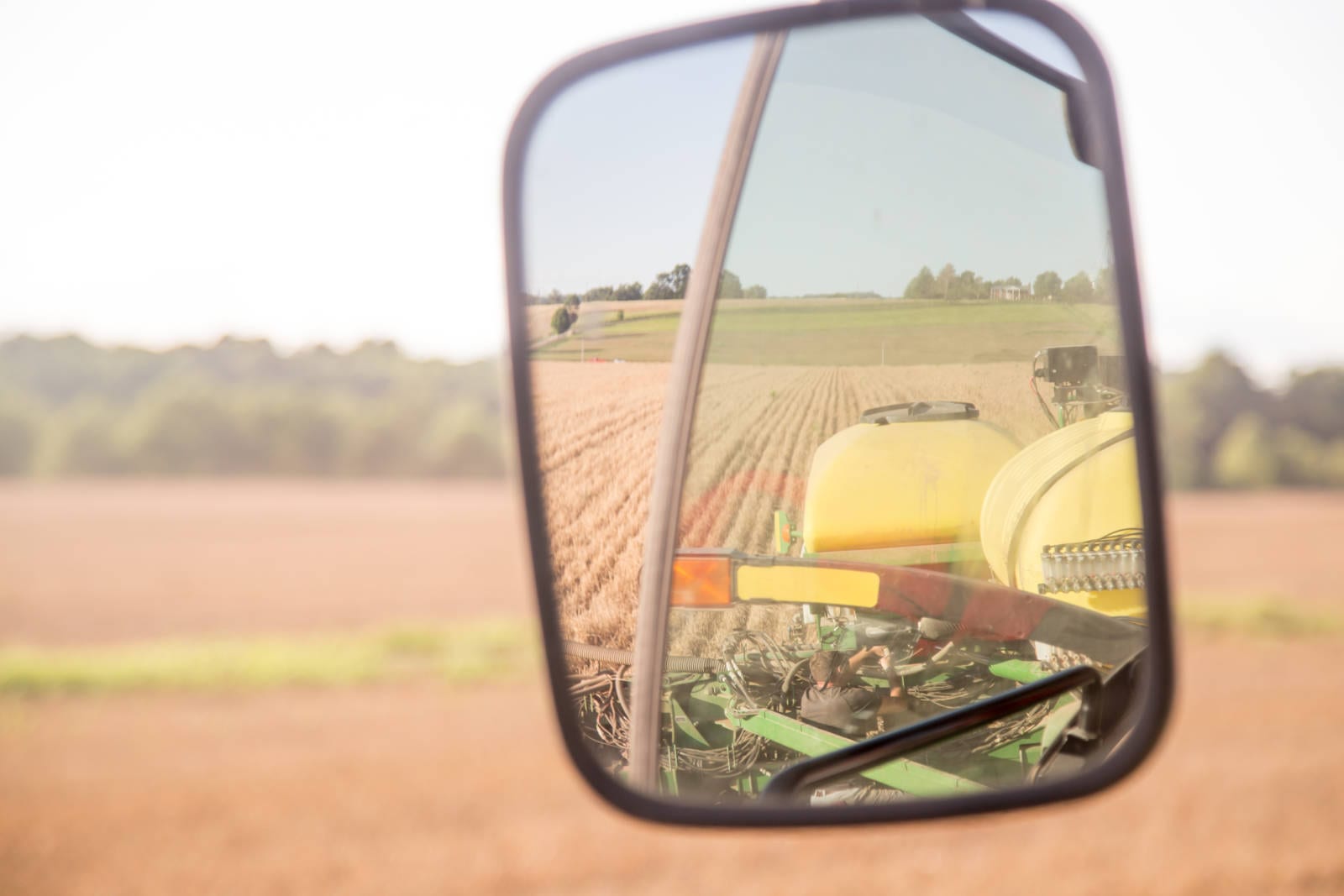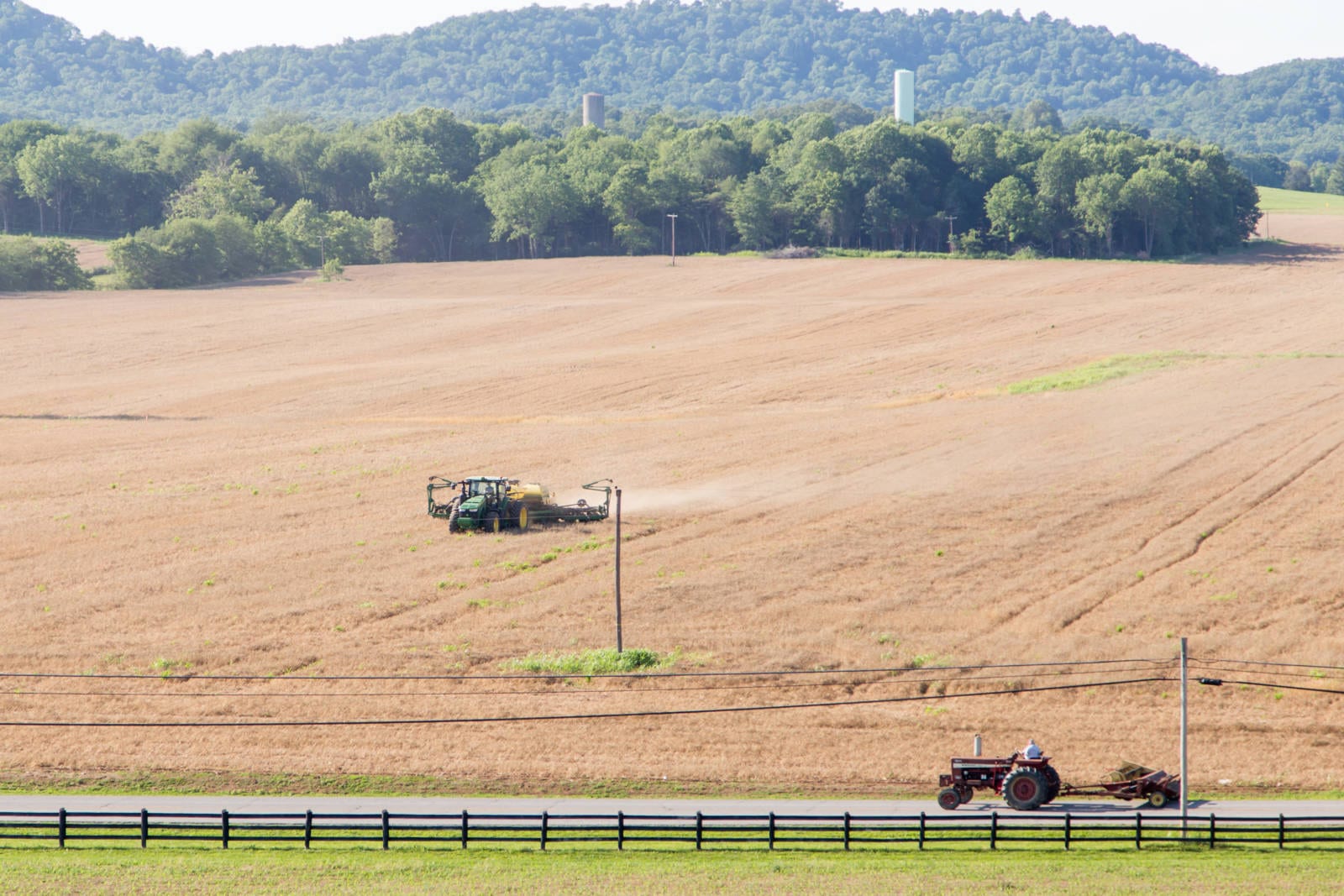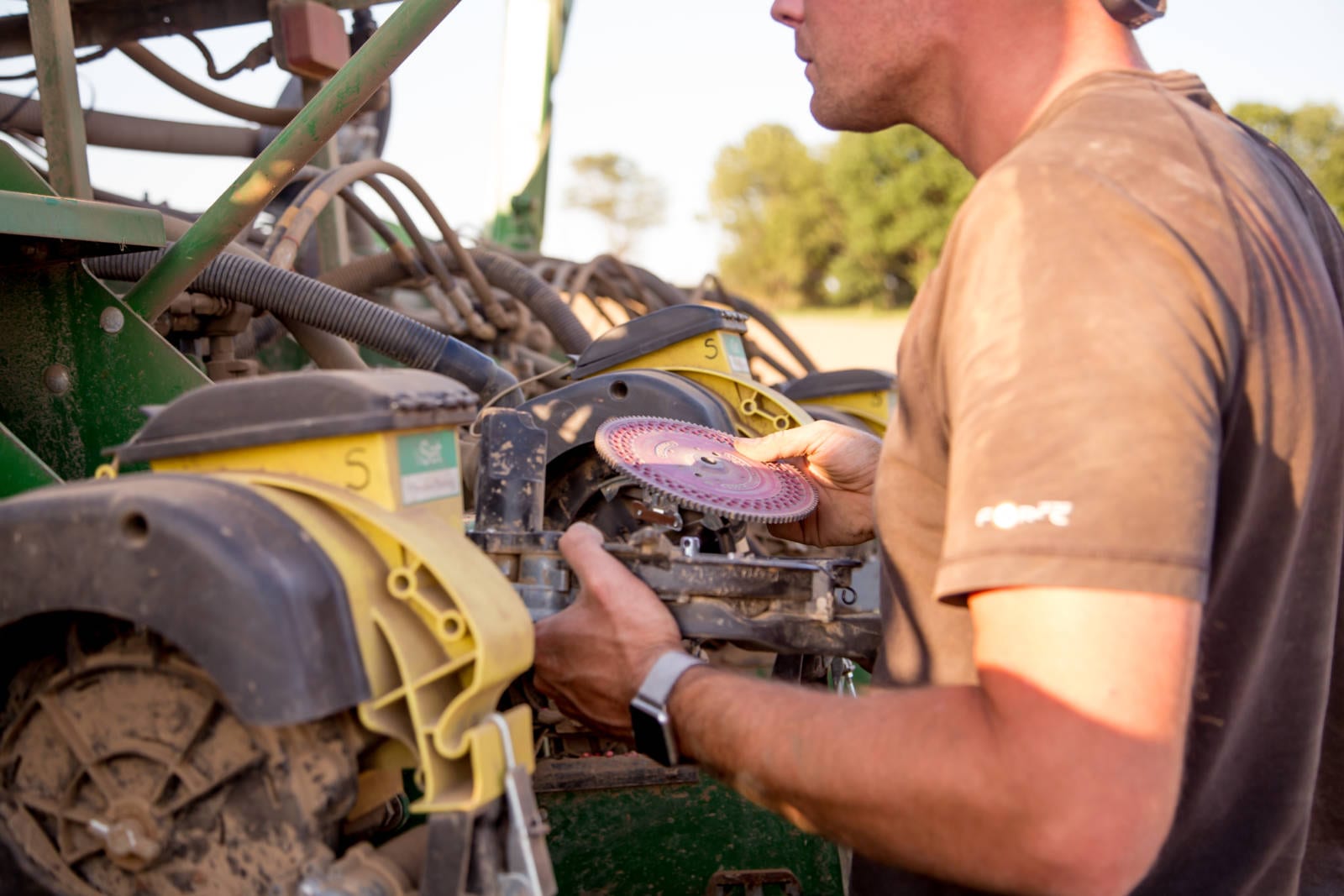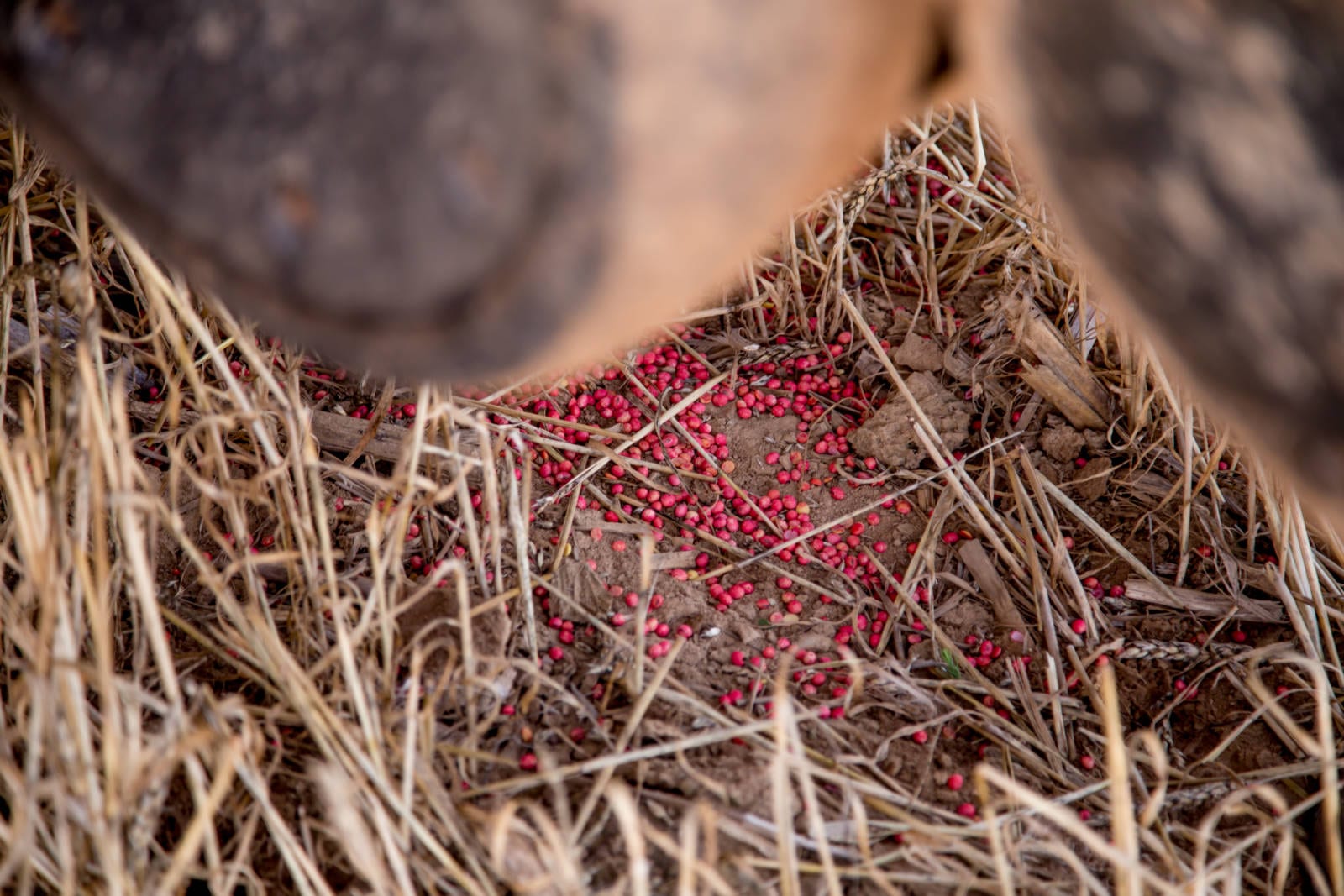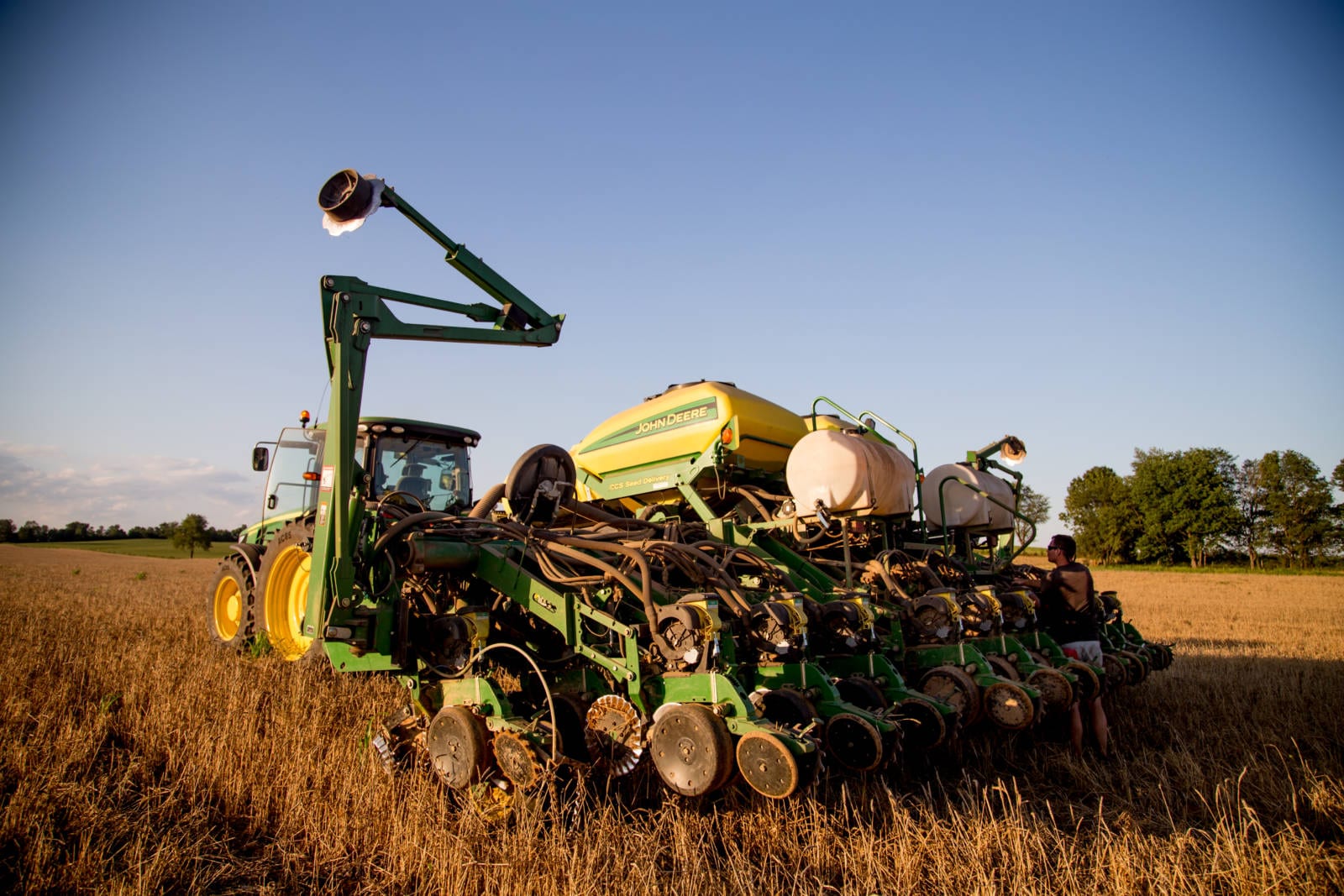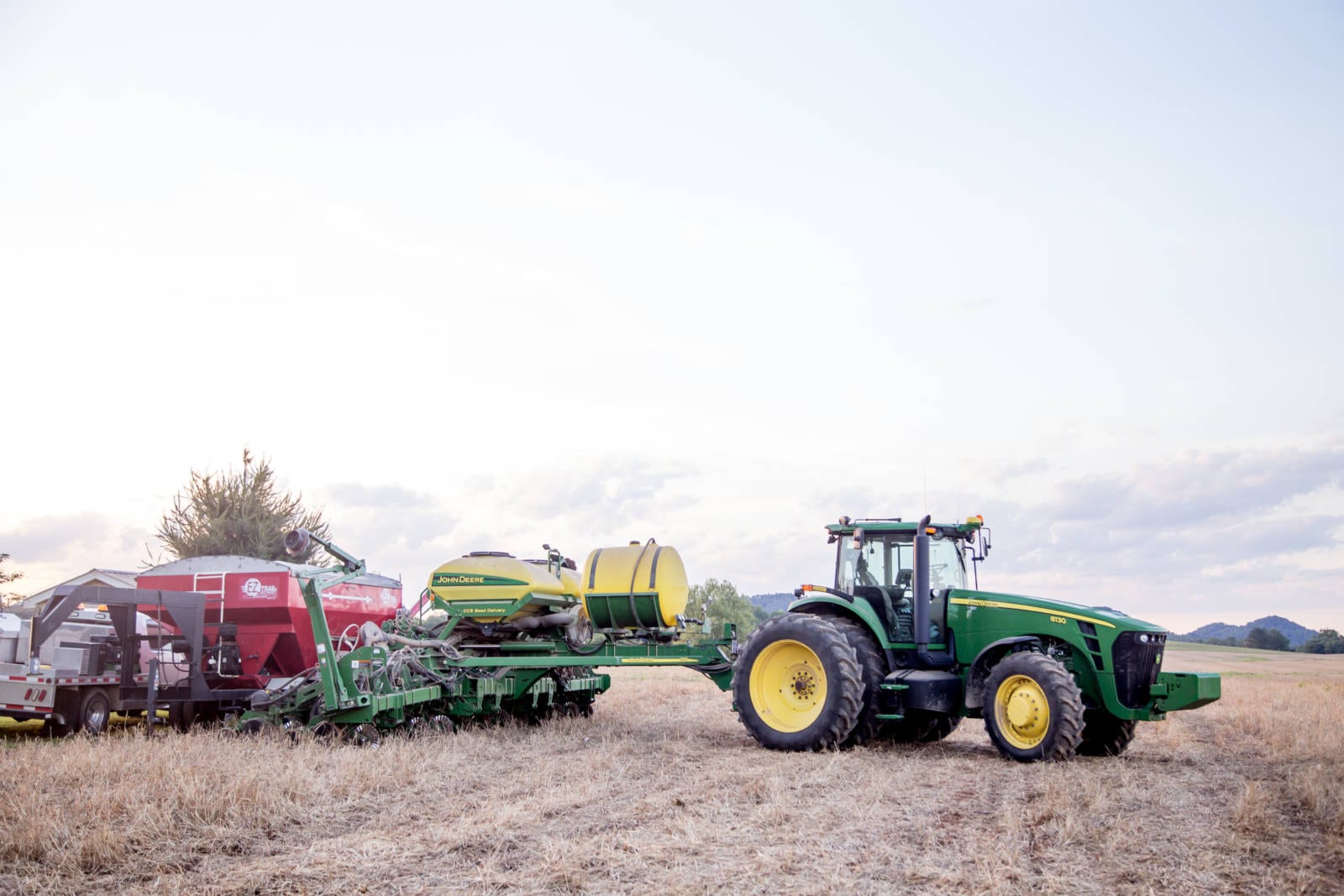We finally got to our last field today. We began planting corn on May 15 and then started soybeans on May 21. It’s seemed like a long planting season because we’d have a window of rain, then a window of nice weather, but when we’d get ready to get back out in the fields, it would rain again.
- We finally got to our last field today. We began planting corn on May 15 and then started soybeans on May 21. It’s seemed like a long planting season because we’d have a window of rain, then a window of nice weather, but when we’d get ready to get back out in the fields, it would rain again. This is a shot taken from the front of our house that shows the field across the road. I’m planting beans into a cover crop of wheat. This year, we used wheat as a cover crop for our soybeans and rye as a cover crop in our corn.
- We get a lot of farm traffic along our road this time of year. All kinds of equipment pass by. That’s our neighbor Mr. Boone on his red 766 International; he was mowing hay that day.
- Here’s a good shot of our planter. You can see our house in the background.
- This was a tough day. I’d just switched to planting soybeans from corn and my planter plugged up. I was resetting the blower fan because the delivery tubes were clogged. The beans were dirty and it was really hot and humid outside, so I had to keep putting in graphite so everything wouldn’t stick.
- I’d probably hopped in and out of the tractor five times trying to adjust and fix the planter. I think all farmers get frustrated on these hot, humid days.
- This year, I’m doing a low population trial on my soybeans. My main population is 135,000 seeds per acre. I’m trying different populations – 60,000, 80,000, 120,000, and 160,000 – over two different soil types in this field to see if I can reduce the amount of seed I use and still maintain yield. I’m trying to replicate a University of Kentucky trial in my ten-acre field. They used a two-acre field. A lower population might mean higher yields – we’ll pull out this block at harvest to see if it increased or decreased or if there’s any change at all. Three years ago, I set five- and ten-year goals for our farm and I don’t feel like they were aggressive enough, so I really want to try and research and use some of these sustainability methods. In addition to cover crops and population trials, I also am drilling in fertilizer this fall – this hopefully will help us to spend less and waste less.
- Here’s a view from my rearview mirror of a field that had been planted. When I looked back, I thought, “We’ve been in this field for four hours and we haven’t gotten very far.” But we got it done.
- We let the wheat grow a little extra this spring. This lets the roots get better established into the ground. This helps with compaction. I was going to spray the wheat, but then it rained. You can see here how the wheat “headed out.” This isn’t a bad thing because now we’ll get another crop out of it.
- Since we let the cover crop grow this spring to gain root depth, that was going to set us back about 10 days, but since we had so much rain, we were about 20 days behind a typical year. I usually like to have my full-season beans in by May 25.
- One of the rows in the back of my planter wasn’t responding to the population change, so I needed to see what was going on here.
- I had to take apart the meter and pull out the seed. I forgot to put the clip in the feed tube so the beans wouldn’t clog.
- Here, I’m putting the meter back.
- You can see a little better how the meter goes back into the planter.
- This is what happens when the seeds clogged in the planter. They’d jam first, then all release in a massive pile.
- We clean off the planter between fields. You don’t want to carry weed seed between fields or crops.
- Here’s a wider shot of me swapping out the meter on the planter. This shows you what a big piece of equipment the planter is.
- Here, the planter is emptied and I’m getting better seed that’s clean. That was the highlight of my day. As you got a chance to see, dirty seed can make a long day even longer.
